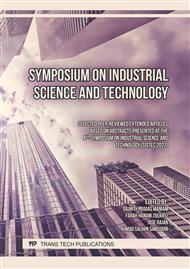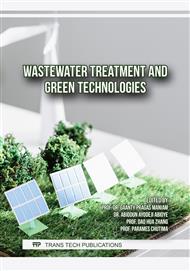p.93
p.103
p.113
p.123
p.133
p.143
p.155
p.165
p.173
Carbon Dioxide (CO2) Capture and Utilization Targeting
Abstract:
The global increase in CO2 emissions is attributable to this study. Carbon capture and storage (CCS) is a potential method for reducing CO2 emissions. However, reducing CO2 emissions by storing it in a geological reservoir without using it may have limitations over time. Using a CO2 integration-based strategy, this study presents an algebraic targeting method for determining the optimal utilisation network. Along with CCS development, the concept of CO2 capture and utilisation via CO2 integration is presented. The qualified CO2 captured from CO2 emissions sources is injected into a CO2 pipeline or header in order to meet the CO2 utilisation needs of a variety of industries. Prior to injecting the remaining CO2 into a geological reservoir for storage, the CO2 sources and needs are matched. The CO2 headers can meet the CO2 requirements of industries located along the headers that use CO2 as a feedstock or raw material. The estimated integration of CO2 capture and CO2 utilisation will minimise the amount of CO2 sent to storage and increase the geological reservoir's carbon storage life span. The CO2 capture and usage targeting tool that was made has led to about 220.5 t/h of integrated CO2 source and demand, with 47% less CO2 that needs to be sent to storage.
Info:
Periodical:
Pages:
173-178
Citation:
Online since:
February 2024
Keywords:
Price:
Сopyright:
© 2024 Trans Tech Publications Ltd. All Rights Reserved
Share:
Citation:



